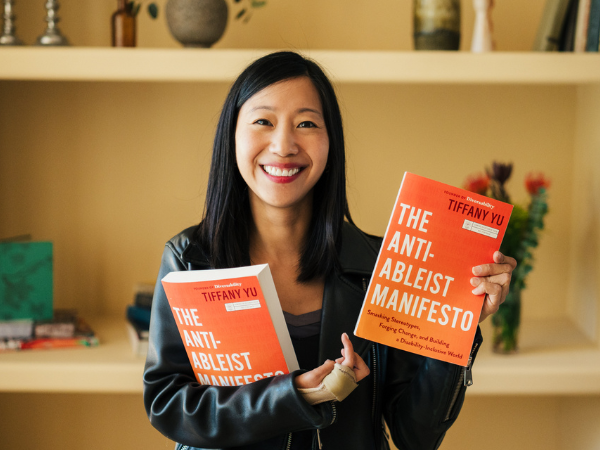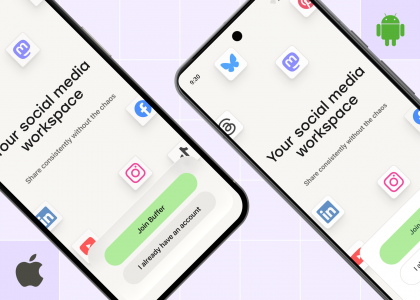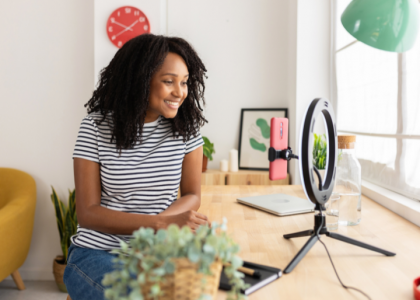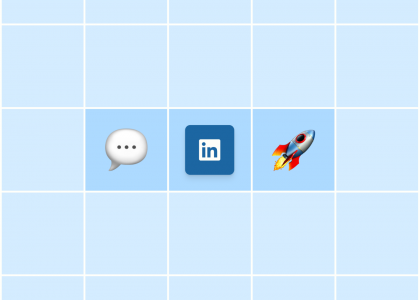I knew nothing about TikTok when I started my account in March 2020.
A fellow business owner recommended I get on the platform to expand awareness for my disability advocacy company Diversability, and I gave it a chance but initially struggled to find traction.
A few months later, I got a lucky break: I saw friends announce they were part of TikTok’s Creative Learning Fund, and I decided to pitch myself as a disability educator by reaching out to the agency my friends were working with.
I was accepted and received a small stipend to create 40 #LearnOnTikTok videos over a few months.
@imtiffanyyu PSA: wear a mask! #wearamask #tiktokpartner #learnontiktok #brachialplexusinjury #wearmask #onehand ♬ Triangle – Chris Alan Lee
Thanks to that influx of content, my following skyrocketed from 700 to 45,000 in one month. The bulk of that TikTok follower growth came from a video of me putting a mask on one-handed going viral by chance — having a channel full of content on a similar theme then made folks want to stick around.
While we didn’t receive any boost from TikTok per se, we were asked to use the hashtag #LearnOnTikTok, which may have helped increase the visibility of the content. I also learned about what worked and didn’t for growing my audience.
My follower growth since then has continued to be completely organic. I now have over 130,000 followers, added brand partnerships as a new income stream for my business (earning $55,000 in 2021 and $105,000 in 2022), and even landed a book deal thanks to my thought leadership on the platform.
If you’re a business owner looking to elevate your brand awareness and even earn money on TikTok, here are the best practices that helped me get there.
I created a series to keep myself consistent and focused
After those early months of experimenting with different kinds of videos, I wanted something that would help me stay consistent and streamline the content brainstorming process. I decided to start ‘The Anti-Ableism Series.’
Each of these videos starts with the same phrase — “Do you want to be a better ally to disabled people?” — and focuses on one action people can take to do so, such as changing ableist language, responding to microaggressions, or making hashtags more accessible.
This series put me on the map. Since launching it, I was named to the inaugural API TikTok Trailblazers list alongside creators like Bella Poarch, and a literary agent who saw it reached out about writing a book. The series has nearly 300 posts and over 5 million views — a reach I previously could have only dreamed my advocacy content would achieve.
I think it’s been so successful for a couple of reasons. For one, it helps new followers engage more deeply in my content. When someone discovers a video and sees it’s “part 273,” they’ll likely be curious to explore other content from the series.
I make this easier by adding an #AntiAbleism hashtag to each video, ensuring the thumbnails clearly label them as part of the series, and compiling them into a playlist at the top of my channel.
To help myself stay motivated to continue the series, I made sure each video was about one tiny piece of advice (e.g., “Capitalize the first letter of each word in a hashtag to make it accessible for those using screen readers”) instead of a broader topic like how to make your social videos more accessible.
I kept an ongoing list of ideas based on questions people asked or things that happened in my daily life so I could always pull one and film a quick video.
Collaborating with other disabled creators and friends was also instrumental in helping me reach this number of videos. Now, I regularly invite other disability advocates on to share their anti-ableism tips — people will go out of their way to find me at events so they can be on the series.
I get additional content on the platform, they get access to my audience and vice versa, and I have an easy way to build deeper relationships with others in my industry.
@imtiffanyyu If we say we can do the job, give us the opportunity to do it. Featuring @Ryann “Ry” Mason ♿️❤️ Pre-order The Anti-Ableist Manifesto at https://bit.ly/AntiAbleistBook #AntiAbleism #AntiAbleist #Disability #DisabilityPride #DisabilityInclusion #DisabilityAwareness #DisabilityTikTok ♬ Papaya – Pastel
I focused on engaging, not broadcasting
Rather than just creating content that is engaging to my audience, I also look for ways to engage with them.
For example, early on in growing my channel, I not only made sure to try to respond to most of the comments, but I would also respond to questions with video replies.
Not only does that person get notified that you replied, but it also signals to your audience that you are reading the comments and willing to engage with them, making them more excited to stick around.
@imtiffanyyu Reply to @toguboguroblox – how I drive #WelcomeWeek #driverslicense #driversed #brachialplexusinjury #disability #disabilitytiktok #onehand #howidrive ♬ Sunset Lover – Petit Biscuit
I also love asking viewers questions so that they can record video responses. For example, in one of my more viral videos, I asked for ideas for better ways to put on over-the-ear headphones one-handed, and people made stitch videos giving me advice. It was useful information and also got me more reach. I have also created posts that encouraged people to duet my videos.
@m3ganb3th #duet with @imtiffanyyu #AVM #BrainAneurysm #stroke #fyp ♬ In Love With You – BLVKSHP
Finally, I always include captions in my videos. This isn’t just to serve disabled people: Data suggests that 75 percent of smartphone users watch mobile videos on mute.
I’m still shocked by how many TikTok creators don’t do this, especially when it’s easy to add auto-captions, and it’s such a big SEO and engagement win. Just make sure you edit the captions if they are automatically populated to ensure they’re correct.
I made brand partnerships as seamless as possible
Brand deals have been a wonderful additional revenue stream for my business. But, as a multi-hyphenate entrepreneur who is not a full-time creator, it was important to me that working with brands was easy and that those partnerships didn’t take away from the integrity of my advocacy messaging.
I got my first four-figure brand deal when I had only 5,000 Instagram followers. When I was getting started, I used influencer marketplaces like Obviously and Aspire, but the bulk of my work has come from brands approaching me.
I knew that if brands wanted to reach a disability-centered audience, my content made it clear I could help them do that, so I kept my contact info front and center in my bio.
The most effective strategy for landing the deal once a brand reached out was creating a few different video formats that sponsors could easily slot into. In addition to the Anti-Ableism series, I also regularly post “paralyzed arm” content, offering insights into daily life with my disability, plus TikTok content classics like GRWM (get ready with me) and HaulTok videos.
Whenever I’m discussing a partnership with a brand, I consider where they could naturally fit in. For example, I partnered with a vibrator company to discuss sexual health in the disabled community as part of the Anti-Ableism series.
I’ve also partnered with Hilton using a “day in the life” format that featured various clips with a voiceover.
This approach makes pitching brands easier because I have clear guidelines on how we can work together and plenty of organic examples of what the content could look like. More importantly, it ensures my branded content seamlessly integrates into my standard content.
While many of my clients have come from brands reaching out to me or are thanks to the hard work of my talent manager (more on that in a minute), I’m also not afraid to create unsponsored videos about products I love and then pitch the brand about doing more together.
For example, I casually shared my love for Melio in a video about how I manage partnerships (notice that I used that video reply feature too!), sent them the post, and recently released a paid video with them. This can be a great strategy for creators getting started working with brands who don’t have past examples.
Finally, in 2021 I decided to hire a talent manager to help with these partnerships. This isn’t totally necessary — I have friends with plenty of work who do it all by themselves — but for me, managing inbounds, paperwork, and payments was taking away from time I could be spending on other parts of my business. The manager’s commission felt worth it to make this income stream as easy as possible.
If it’s not clear, I am a big fan of TikTok. Even as the platform has changed, I still feel like it’s the easiest place to grow an audience quickly. But I also enjoy creating video content, which allows me to show up authentically on the platform, and I know that’s not true for everyone. I regularly hear founders say, “I should get on TikTok,” even if they don’t enjoy that type of content creation.
My advice: Just because it’s shiny, doesn’t mean it has to be your growth path. TikTok is one of many options for top-of-the-funnel marketing — when you find the channel that is most fun for you, the people you’re meant to attract will come.






